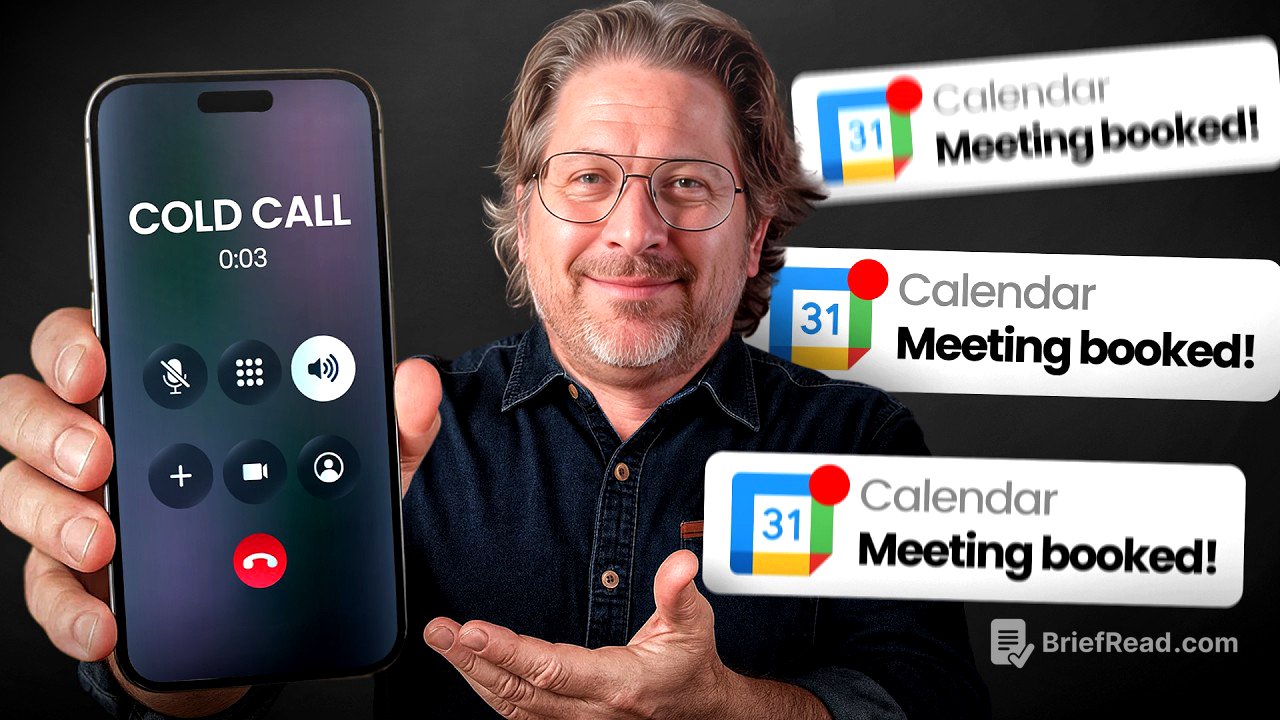TLDR;
This video features Mark Roberge, who explains the essential steps for a successful cold call. Roberge uses a case study involving a food catering business to illustrate his points, and even conducts a live cold-calling exercise. The key takeaways include the importance of a tight, repeatable script, handling objections effectively, and sounding authentic rather than like a salesperson.
- Use a simple, repeatable script to manage the initial intense moments of a cold call.
- Embrace objections as part of the process and use them to drive the conversation forward.
- Sound authentic and human to build trust and avoid sounding like a typical salesperson.
Introduction to Cold Calling [0:00]
Mark Roberge introduces the topic of cold calling and its importance, particularly for entry-level sales roles. He mentions a Harvard Business School class where students practice cold calling by trying to sell pizzas to local businesses. Roberge emphasizes that cold calling is a challenging but crucial skill in sales.
Cold Call Simulation [2:47]
Matthew attempts to cold call a chiropractor's office in Seattle, posing as a representative from a pizza delivery company. He faces initial resistance and uncertainty from the person on the other end of the line. Roberge observes and notes that Matthew froze up after the initial line, highlighting the need for preparation and a solid opening.
Sam Nelson's Cold Calling Technique [5:05]
Roberge introduces Sam Nelson's cold calling technique, which focuses on simplifying the process to allow the caller to concentrate on the prospect's objections. The technique begins with asking, "Did I catch you at a bad time?" and then delivering a brief elevator pitch followed by a specific ask. The goal is to create a "flywheel" where objections are handled and the ask is repeated until the prospect either agrees or hangs up.
Live Cold Call Demonstration [6:42]
Roberge simulates a cold call with Matthew, who plays the role of the person being called. Roberge uses Nelson's technique, asking if it's a bad time, delivering a brief pitch about a pizza that drives team culture and happiness, and then asking to send one over for $20. Matthew raises several objections, which Roberge addresses while continually reiterating the offer. Eventually, Matthew agrees to try the pizza.
Analysis of the Cold Call [9:18]
Roberge analyzes the simulated cold call, emphasizing that the goal is to book a meeting, not just sell a pizza. He explains that the script is designed to free up mental energy to focus on and handle objections effectively. Roberge highlights the importance of persistence and not letting the person out of the "flywheel" until a decision is made.
Ethics and Mindset in Sales [11:20]
Roberge discusses the ethics of sales, emphasizing the importance of believing in the product and genuinely trying to help the customer. He draws an analogy between sales and being a doctor, where delivering hard truths is necessary to solve the patient's problem. The key is to focus on solving the customer's problem rather than just making a sale.
Practical Tips and Another Cold Call Attempt [12:23]
Roberge provides a script template: "Hi, did I catch you at a bad time? I'll be brief. We have an innovative gourmet pizza that drives employee happiness, it's only $20." He reiterates the importance of handling objections and persisting with the offer. Matthew attempts another cold call, this time successfully securing an agreement for a free pizza by addressing the prospect's concerns about cost and logistics.
Abstracting Tactics and Addressing Concerns [15:00]
Roberge and Matthew discuss how to abstract the cold calling tactics to general sales strategies. Roberge emphasizes the importance of knowing the sales pitch, anticipating objections, and maintaining the mindset of solving a problem for the customer. He reassures founders that it's okay to be persistent and even a little uncomfortable in the pursuit of helping customers and promoting a valuable product.
Recap and Final Takeaways [17:31]
Roberge recaps the key lessons from the video: use a simple, repeatable script to manage the initial intense moments of a cold call; embrace objections as part of the process and use them to drive the conversation forward; and sound authentic and human to build trust and avoid sounding like a typical salesperson. He encourages viewers to subscribe for more content.









